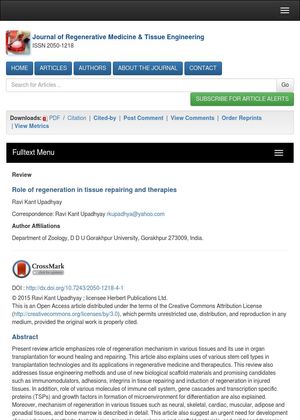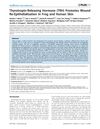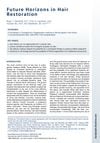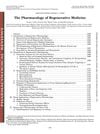Role of Regeneration in Tissue Repairing and Therapies
January 2015
in “
Journal of regenerative medicine & tissue engineering
”

TLDR The review concludes that innovations in regenerative medicine, tissue engineering, and developmental biology are essential for effective tissue repair and organ transplants.
The 2015 review "Role of regeneration in tissue repairing and therapies" by Ravi Kant Upadhyay discussed the crucial role of regeneration in healing wounds and recovering from injuries, and its potential applications in therapeutic treatments. The review emphasized the potential of harnessing this natural process for therapeutic purposes, such as in regenerative medicine and tissue engineering. It highlighted the importance of various stem cell types, tissue engineering methods, new biological scaffold materials, and promising candidates such as immunomodulators, adhesions, and integrins in tissue repair and regeneration. The review also detailed the role of various molecules of the immune cell system, gene cascades, transcription specific proteins (TSPs), and growth factors in creating a conducive microenvironment for cell differentiation. The document concluded by emphasizing the need for innovations in regenerative medicine, tissue engineering, and developmental biology for successful tissue repair and organ transplants.





